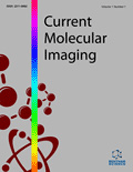Abstract
As MRI has been used in biomedical research and medicine since the 1970s, Magnetic Resonance Spectroscopy (MRS) has been employed to study biochemical alterations in living animals and humans. By taking advantage of its noninvasive nature, 1H, 13C and 31P MRS are being actively utilized in clinical and biomedical studies to detect lipids, metabolites, and/or kinetic information, such as acetyl carnitine content and ATP synthesis rates in vivo. These data would be quite difficult to assess by other modalities. Furthermore, many studies have indicated that in vivo values obtained by MRS show a close correlation with important metabolic parameters (e.g., hepatic and intramyocellular lipid content by 1H-MRS correlated with insulin sensitivity), which adds value of MRS. Moreover, hepatic glycogen synthesis and breakdown can be directly detected by 13C-MRS, whereas in vivo ATP synthesis rates in mitochondria can be assessed by 31P-MRS as well. These in vivo data offer critical metabolic information in animals and humans, and often serve as useful biomarkers for the pathophysiology and state of a disease. Thus, in this review, important and frequently used modalities and applications of MRS in muscle, liver, and other organs are described.
Keywords: MRI; 1H, 31P and 13C MRS, Magnetic resonance spectroscopy, liver, muscle and heart MRS.
 7
7

